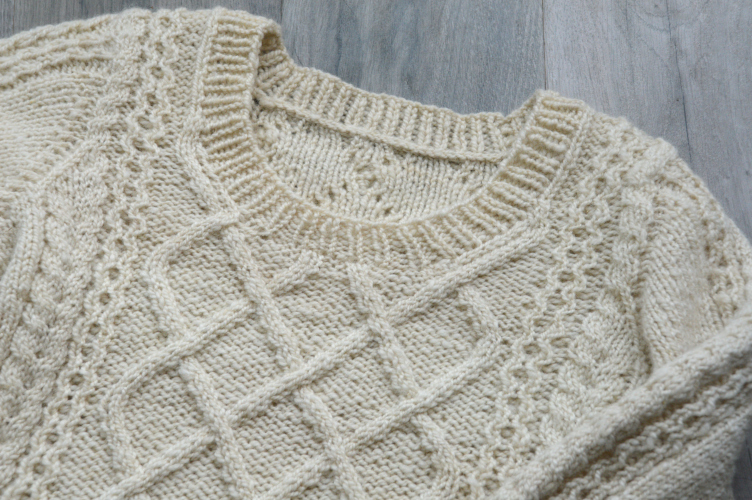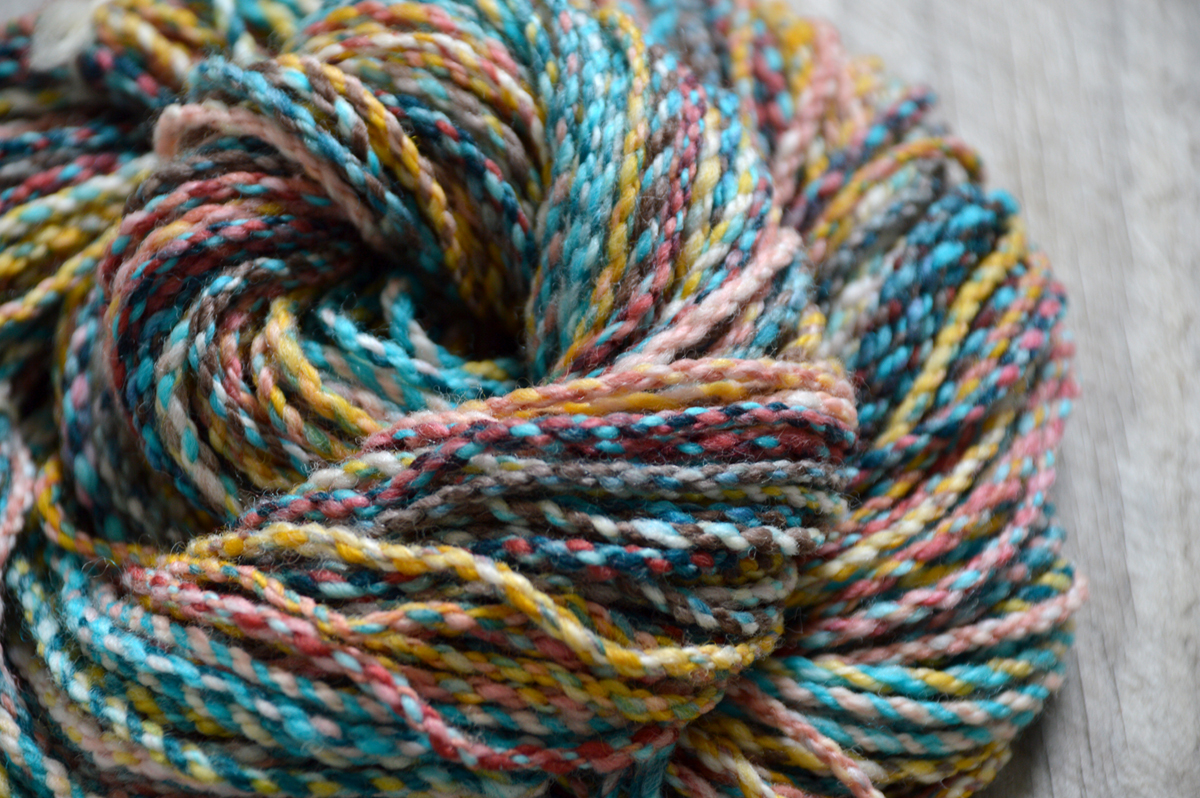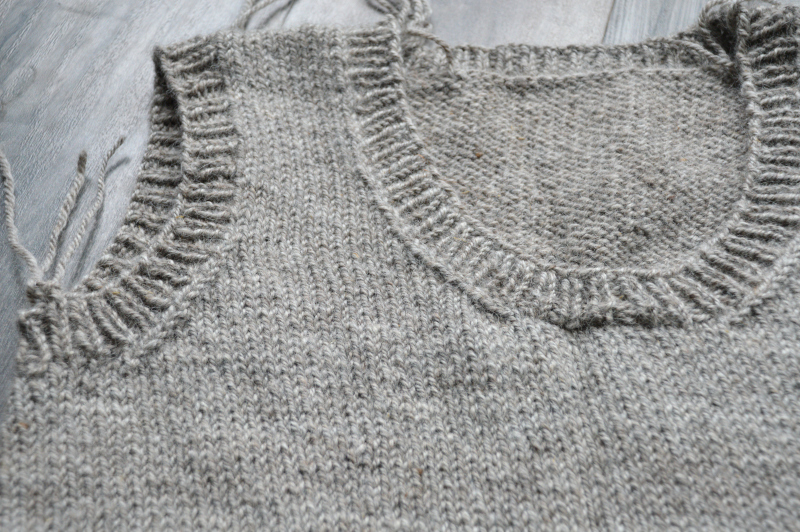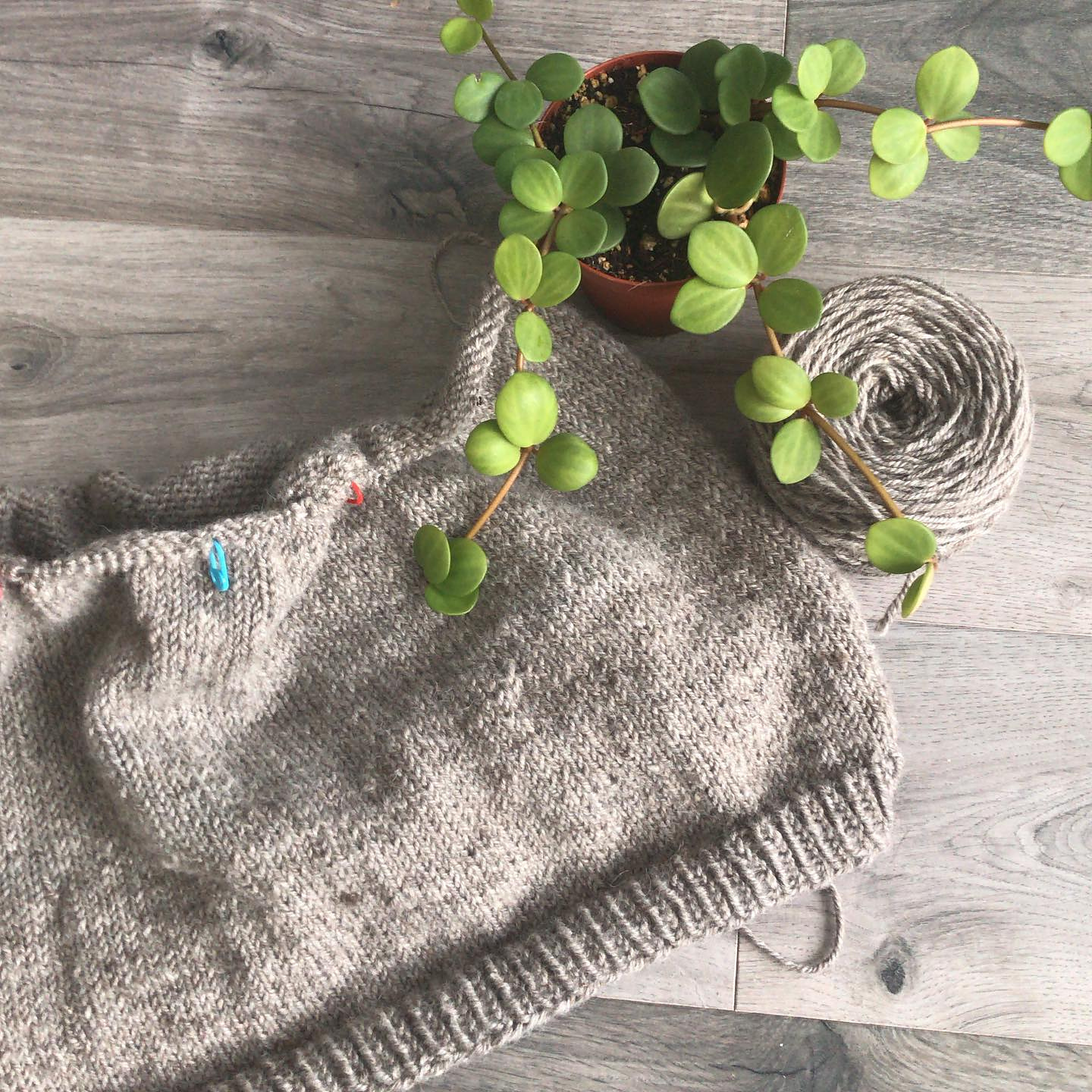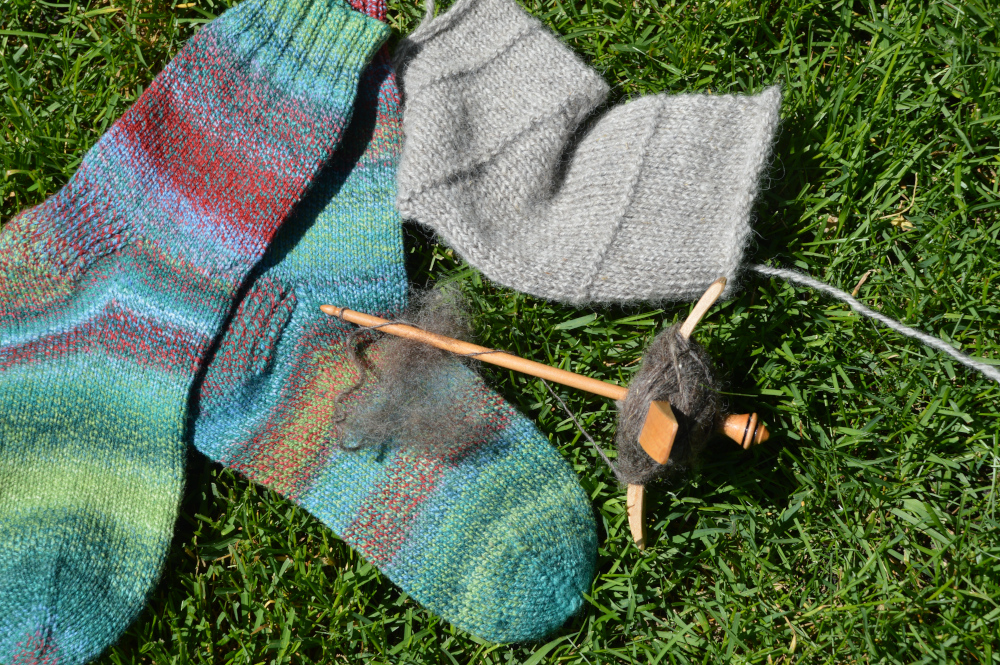I love my yearly fleece to sweater project. It’s something I started in 2017, wherein I take a whole year to produce one finished garment from the raw stage right through to the completed project.
I could produce more than one a year – two definitely, maybe three if I sacrificed other projects along the way. But the point of this project isn’t production. It’s about taking the time to fully immerse myself in the whole process of making one sweater. I source the fleece from a local farm in spring, then wash, prep, and spin in summer. Then I spend sometime within the final quarter of the year (usually December) making my finished sweater.
It’s a project that’s purposefully designed to be slow. It’s also a project, because of its slow pace, doesn’t come with a ton deadlines. Deadlines and dates for me are the realm of work, even if they’re self-imposed. And making something feel like work makes it feel less fun. So a whole year is a perfect personal timeline because it’s perfectly doable, but without the added pressure of making it feel like work.
I like to spin for a specific project. There’s no want for sweaters in my to-knit queue, so normally I pick within the first two months of the new year and plan for that. I source the kind of fleece I think will work; Alberta has a wealth of sheep farms and breeds for me to always choose from. I take my time through late spring/early summer to skirt, scour, pick, and card (or comb, but I normally card for a full sweater project). By the time I’m finished that, it’s normally Tour de Fleece time, and that’s when I spin up the project.
Then there’s a bit of a break – I may swatch or I may wait, but normally I fit in some more projects in the next few months. After a big spinning project I really like to let the project metaphorically breathe. I’ve just spent a massive amount of time on getting to the yarn stage and I like to sit with that.
I spend a lot of time knitting other things – gifts for people, or getting knitting designs ready. December is reserved for knitting for me, however, and this is the time I like to create the final garment.
I’ve talked a lot about my process here and here – the technical aspects of picking a fleece, picking a project, and how I think approach the project.
What I really want to talk about with this year’s sweater, however, is all the things that didn’t go right. For the first time, it didn’t all flow naturally, and I absolutely did not get what I planned. The first yarn I spun wasn’t right, the second yarn I spun wasn’t right, but finally in the end, I did get my sweater. It was a reminder to be fluid, and how generally it’ll all work out in the end, even if the final result wasn’t the planned for one.
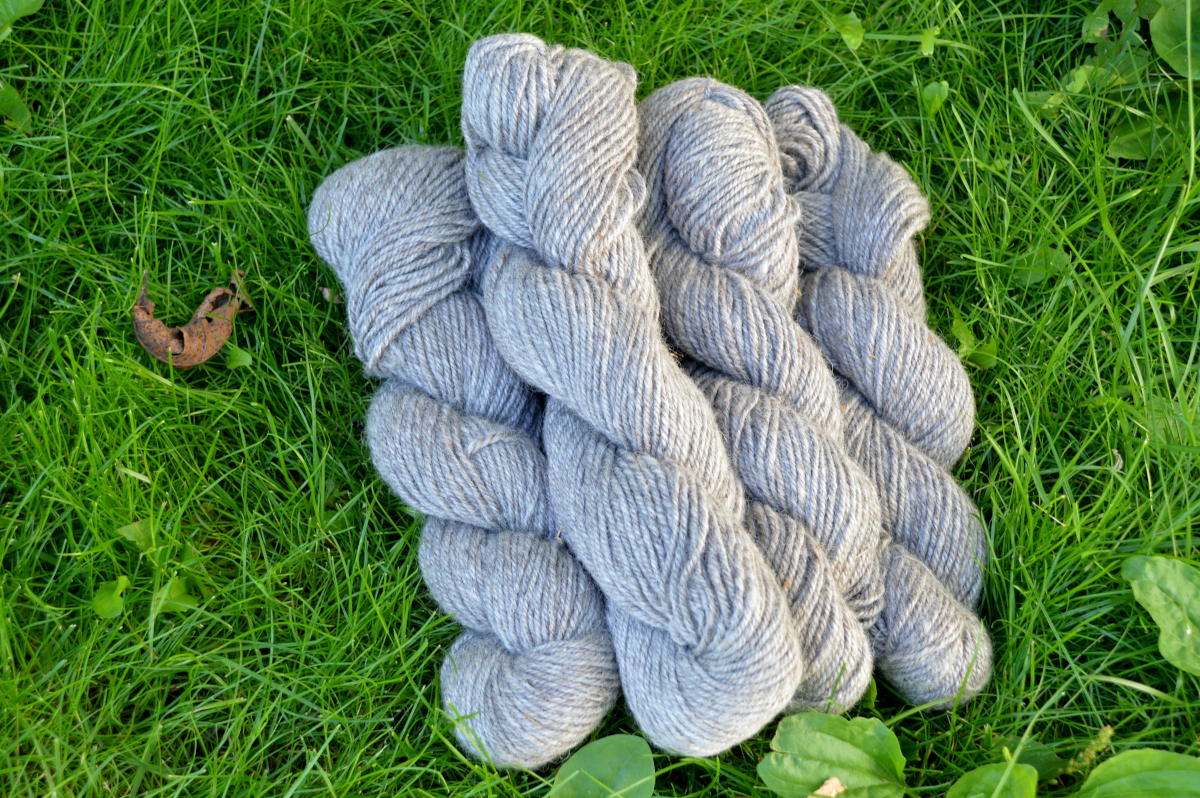
The First Yarn
My goal for 2020 was to make Derwent by Sarah Cooke – a sweater I very much love and has been on my to-knit list for years. I decided to make a blend this year using odds and ends of a few fleeces I had. I had one tiny (but whole) Icelandic, a buttload of alpaca, and a small amount of BFL left over from another project. The Icelandic was white, the alpaca a very light tawny colour, and the BFL a deep grey/brown. Blending the three would get me a beautiful mid-grey, which I figured would be perfect for the cables in this sweater.
All three fibres tended to produce a more dense, drapey yarn. The Icelandic had more bounce, but the quality of this Icelandic was also slightly more drapey than, I would say, an average Icelandic displays. I figured, however, with the plan of a 3-ply yarn and the addition of cables, perhaps there would be enough structure there to not make the garment saggy. I settled on a 52% Icelandic/25% alpaca/23% BFL mix.
I spent some time in spring mixing the three on the drum carder to get something soft, with some bounce, and a colour I wanted. Then I sampled. I wanted to do a 3-ply to really let the cables pop, I liked the yarn I got, and it seemed to fit Derwent perfectly, so I finished up my carding (using all my fibre reserved for this project), and held on to the batts until Tour de Fleece came around.
Deciding on a 3-ply at that stage was the beginning of the downfall.
Alpaca and BFL are heavier fibres – 100g of BFL or alpaca will absolutely not get you the same length of yarn as a Cheviot (as an example). The fibres are denser and have inherently less air, increasing that density. I knew this at this time, and I figured it might be close, but I plowed ahead. I wanted a 3-ply damnit.
So along comes Tour de Fleece, and I start spinning. I spin 6 bobbins, and see how few batts I have left. My gut said “you do not have enough”. But, instead of listening to said gut, I plied them all up into a 3 ply. That could have been a moment where I decided to go 2-ply, and definitely had a sweater quantity. But no, I was set in my thinking.
I ended up with 663 yds at the end of it. 663 yds for an 1050 yd sweater. And no ability to make more because the fibre was all gone.
So, somewhat disillusioned, I put the yarn away. The yarn is gorgeous, and soft, and a yarn (looking back) I’m quite proud of. It’s wonderfully even, and has a beautiful hand. But at the time it wasn’t what I had planned so I was very disappointed.
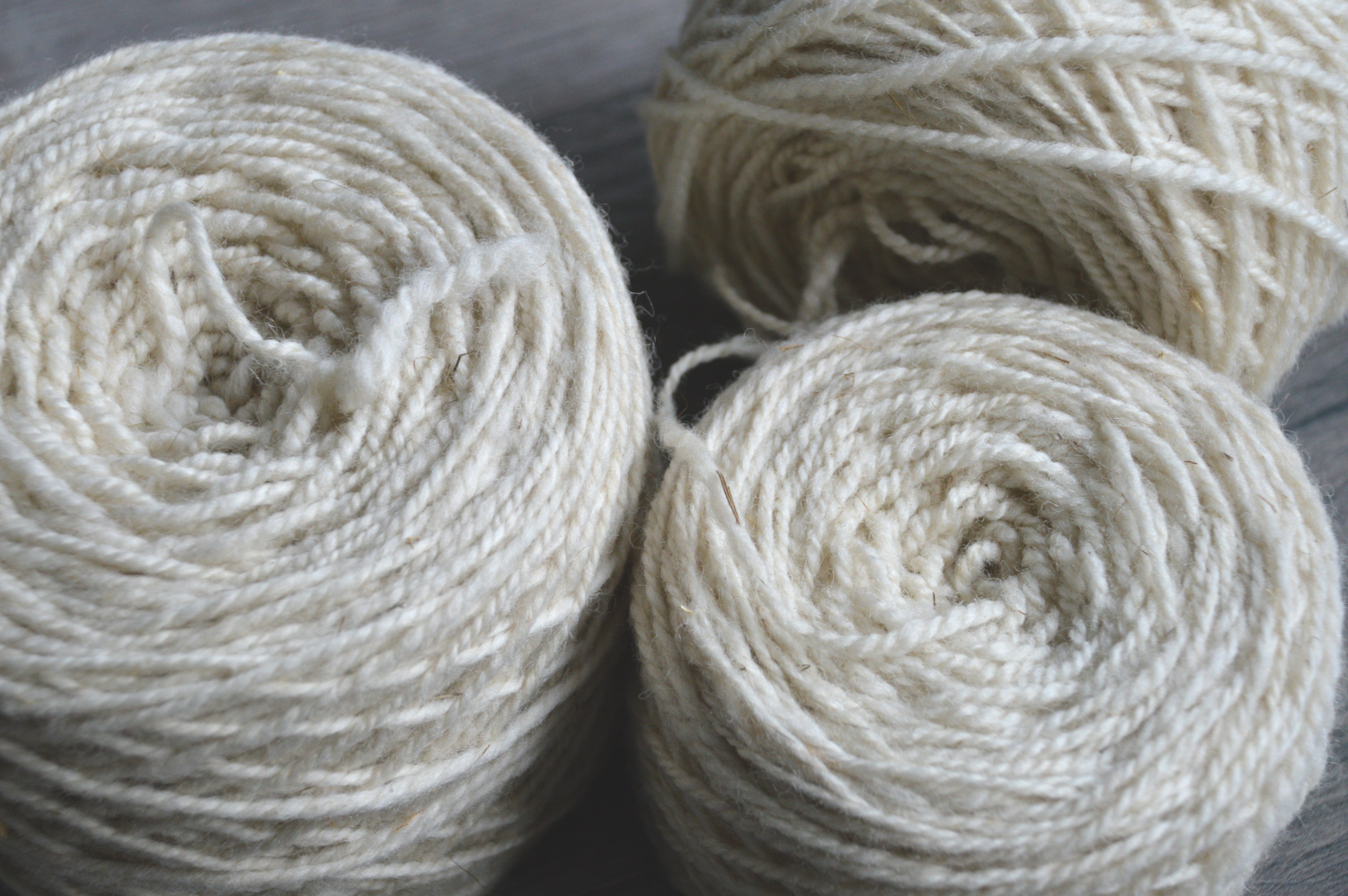
The Second Yarn
Still hellbent on making Derwent in 2020, I reassessed. There was to be another round of Tour de Fleece (following along with the rescheduled race), so I took stock. What did I have an absolute ton of that would absolutely give me a sweater quantity?
Tunis. Tunis I had acquired the year prior actually, but had a bit more VM than I like to have for the shop, so I had hung onto it, knowing I’d still use it.
So I started picking and carding up a storm, getting ready.
Having learned from my mistake I settled on a 2 ply. Tunis is bouncy and light, creating a 2-ply with a nice twist to help the cables pop was something I could easily do. And with almost 2kg of it (unpicked and uncarded) I knew I absolutely had enough.
So I prepped the batts and started spinning during Tour de Fleece 2.0.
Derwent calls for DK yarn. I’ve spent the past few years getting more comfortable spinning thicker yarns, as my go-to is a fingering or sport. I feel confident in my worsted weights now, and getting better at aran weights (bulky is another matter). DK is a bit of a funny weight because it’s right in between, but I sampled and felt like I could do it without going too thin or too thick.
I had my sample beside me, using it as a guide to regularly check my singles. I felt I was going well. Tour de Fleece finished up and I absolutely know I had enough yardage, so I finished the yarn with a simple soak and snap. But something was niggling me in the back of my head.
This does not look like DK…
Still feeling the sting after my first failed attempt I didn’t swatch. I normally swatch closer to when I’m making the sweater anyhow, but I think I subconsciously didn’t want to learn right then that maybe my gauge wouldn’t work out. So I put it away for a few months, waiting for my customary start-after-Christmas-gift-knitting-is-done time.
The Swatch
December comes. Long story short, yeah it was way too thick. According to my swatch, even if I knit the smallest size I’d be swimming in the sweater with an estimated 6″ of positive ease. That’s too much ease for me.
The yarn was much closer to a worsted or heavy worsted weight, despite my extremely close following of my sample. Did my spinning change that much? Did it fluff up way more in the finishing than my sample did?
Honestly, I don’t know, although I suspect it is a combination of the two. Sometimes it feels like despite all our best laid plans, yarns have a mind of their own. Sometimes, it feels like they’re going to do what they’re going to do, and you are simply there to facilitate its will.
So I took a day or two to lick my wounds and think of where to go. I had spun two sweater quantities this year with a very specific goal, and neither of them had worked for what I wanted. One yarn was good but too low yardage, the other had excellent yardage but much thicker than planned.
But, I thought to myself, I’m nothing if not stubborn, and I will use both of these.
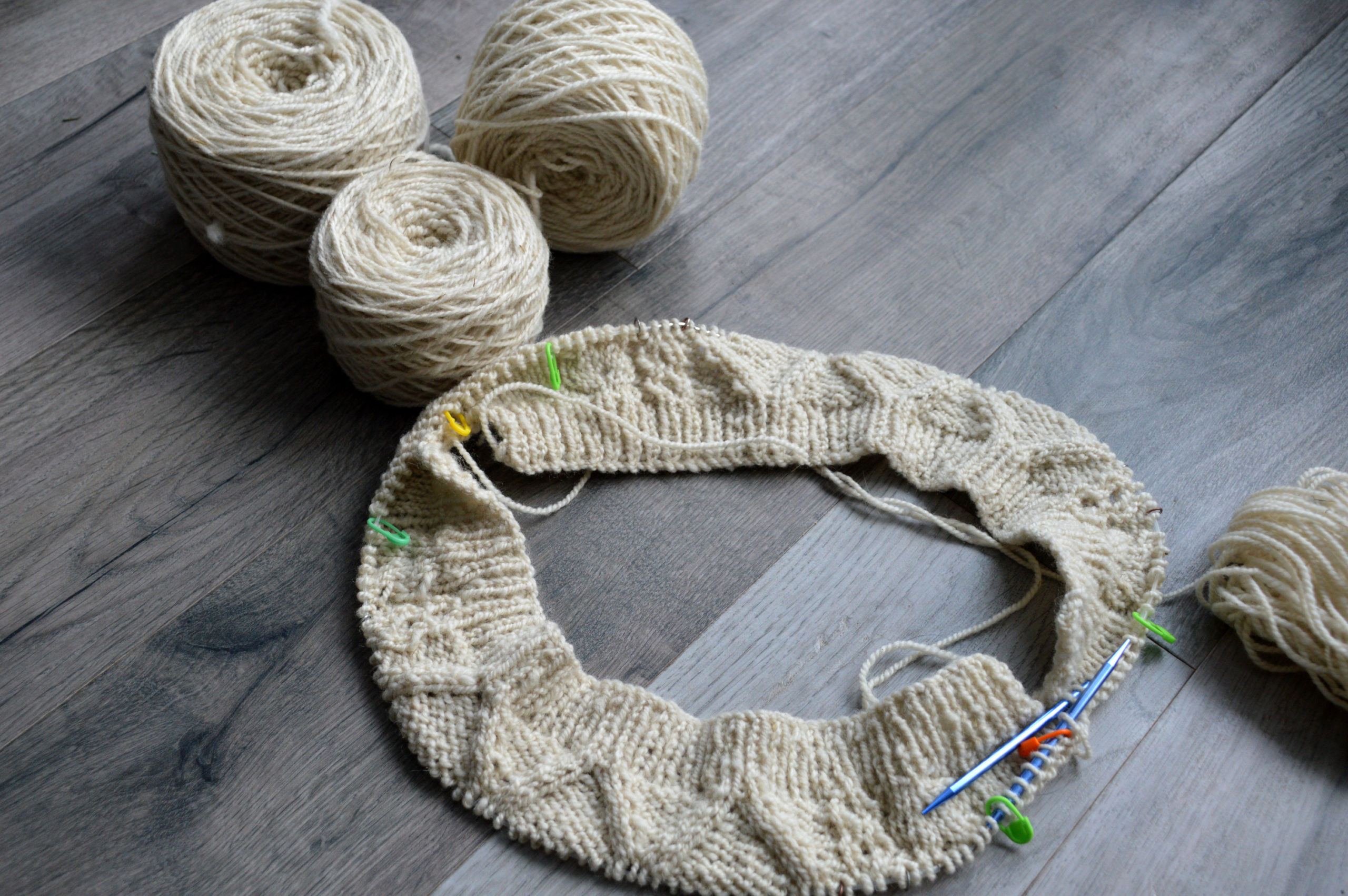
Stubbornness Prevails
I had some options.
My first Icelandic/alpaca/BFL yarn might not have been enough for a sweater, but it should be enough for a vest. So that spin has now been earmarked for a simple stockinette vest, which is sure to keep me real warm with all that alpaca in it.
The Tunis I was going to use for a sweater. It might not be Derwent, but I will have a cabled sweater. So I did some math, and with the assistance of Amy Herzog’s CustomFit I came up with a rough template and threw some cables in. I must admit, the pattern that I came up with is heavily reminiscent of Derwent, although different enough so that when I finally do knit that sweater they won’t be exactly the same.
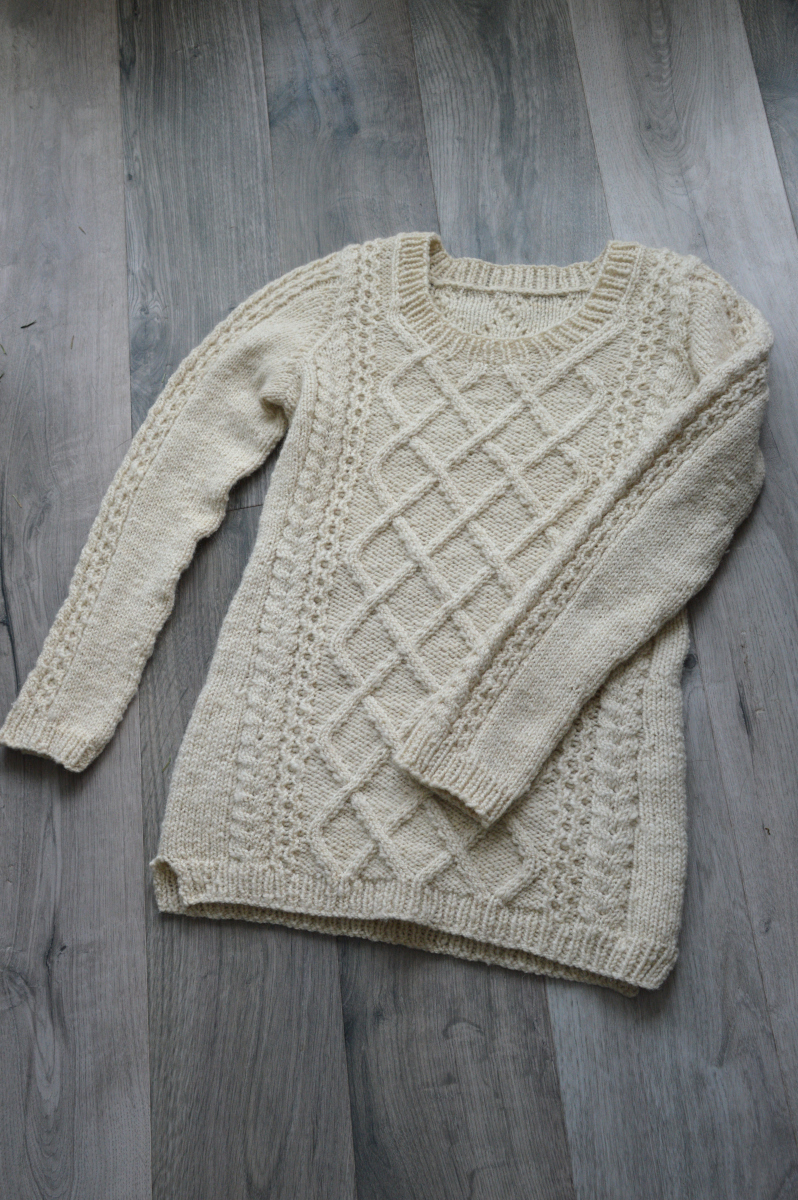
While I was knitting this sweater, I was nervous. I’m not sure if it was because I actually had cause for concern, or if it was because I was a tad gun-shy after so many stumbles with this project through the year. I knew the yarn was bouncy and would relax a lot in the blocking. I knew this because I’m a die-hard swatcher, especially which handspun, which can be slightly unpredictable. But even though I had done the swatch, this sweater looked tiny on my needles. Which caused me to second guess the swatch, and made me think, could I have knit Derwent anyway?
The quick answer is no; I decided to trust the swatch and kept on going. Once I got to the underarm split I put the body on some waste yarn and put it on. It was snug, but I could feel the stretch, so I plowed ahead.
Thankfully, it worked! And on January 1st I got my brand new sweater, maybe not entirely what I had planned back in January of 2020, but damn well close enough.
I’m very happy to have this finished sweater. It feels like it’s by far the one that’s been the most work to get to in the years I’ve been doing this project. It’s also taught me, perhaps, not to be so rigid in my thinking with this project. Maybe some years it won’t all work as planned, and I’ll have to be slightly more flexible.
It’s a good lesson to learn.
The Yarn Details
I know many of you follow this blog for fine details on my spinning projects. I love sharing these with you because it’s a great way to share knowledge. So, for those of you interested, here’s the nitty-gritty details of both yarns spun this year.
The First Yarn – Grey Icelandic/alpaca/BFL blend
Icelandic: 52%
Alpaca: 25%
Bluefaced Leicester: 23%
Spun: Short continuous backward draw (unlike straight short backward, I do not smooth, letting the twist in between my hands, and pulling back several times before allowing the uptake on the bobbin)
Singles (unfinished): 22 WPI
Singles TPI: 3 twists per inch
Finished 3-ply: 11 WPI
Finished yarn TPI: 2 twists per inch
Finishing: Soak & snap
Grist: 503 yards/pound (oh yes, it is a substantial yarn!)
The Second Yarn – Tunis
Tunis: 100%
Spun: Short continuous backward draw (this is my go-to for almost all sweater spins)
Singles (unfinished): approx. 14 WPI
Singles TPI: 2.5 twists per inch
Finished 2-ply: 9-10 WPI
Finished yarn TPI: 2.5 twists per inch
Finishing: Soak & snap
Grist: 740 yards/pound
